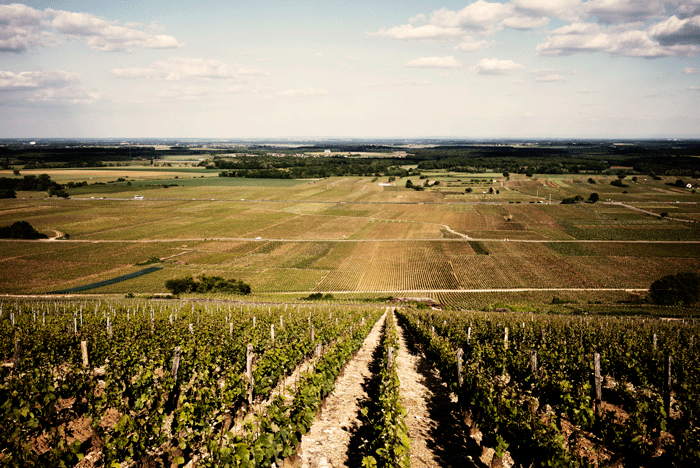Burgundy: the wine of kings, the king of wines
Author: Anne McHale MW
Paradoxically, Burgundy has both changed remarkably and remained very much the same since this letter was sent to a Berry Bros. & Rudd customer back in 1931. What has changed most is the way in which the top wines are produced and sold. Until the 1980s, when demand for Burgundy’s wines began significantly to outstrip supply, grape prices were not high enough to warrant the cost to small growers of producing, ageing, marketing and selling their own wine.
As a result nearly all of the wines mentioned in this letter would have been sold by larger merchants, called négociants, who would have bought in grapes from small growers. Even those few growers who did strike out on their own (and who strove for the utmost assurance of quality by bottling wines themselves) only began the process of domaine-bottling for vintages from the early 1930s onwards.
So the landscape of Berry Bros. & Rudd’s 1931 Burgundy offer would have been very different from our 2013 one, in which the list reads like a roll-call of the region’s famous growers, selling wine produced largely from their own vineyards.
What has remained the same? The famous vineyards, of course; Montrachet and Corton still feature in our offer as they did more than 80 years ago. Likewise the wine styles: elegant, ethereal reds from Pinot Noir and sublime, complex whites from Chardonnay have always been Burgundy’s hallmark. In addition, the region has never been known for its large volumes of wine, and this certainly has not altered – in fact, quite the opposite due to the unfortunate arrival of catastrophic hailstorms in successive recent vintages, of which 2013 was sadly one, with a disastrous storm striking the Côte de Beaune vineyards on 23rd July, causing some growers to lose the majority of their crop. Quantities of fine Burgundy are as low as they have ever been.
So what of the 2013 wines? Having been privileged enough to visit the region in late October to taste with our Burgundy Director Jasper Morris MW, I can vouch for the wonderful aromatic quality and beautiful freshness of these wines. There is no doubt that it was a challenging year: spring was cold and wet, delaying flowering, and September brought mixed blessings. Harvesting time was crucial, and much later than usual with most beginning to pick at the end of September through to early October.
Despite these difficulties, I was without exception very impressed by the quality of the wines, having not expected greatness from a vintage which had hardly been hotly anticipated. The word which cropped up again and again as we tasted in the cellars was croquant (lit. ‘crunchy’) – referring to the crisp, fresh character of the wines, their deliciously juicy fruit and balancing incisive acidity, and, very importantly in today’s world of ever-increasing ‘burn’ in wines, moderate alcohol.
Revel in the lightness of touch and charming aromatic character of the 2013s – they will not disappoint. And of course, due to their crisp style, they will make excellent food partners. This is perhaps one final factor which has not altered about the Burgundy of now versus that of eight decades ago: the ability of these wines to “be anticipated with infinite pleasure by those who enjoy on a cold Winter’s night a bottle of good Burgundy, with an equally good Roast or the Game in season.” Bonne dégustation.
Burgundy 2013: En Primeur launches today; explore our offering from this extraordinary region on bbr.com.




